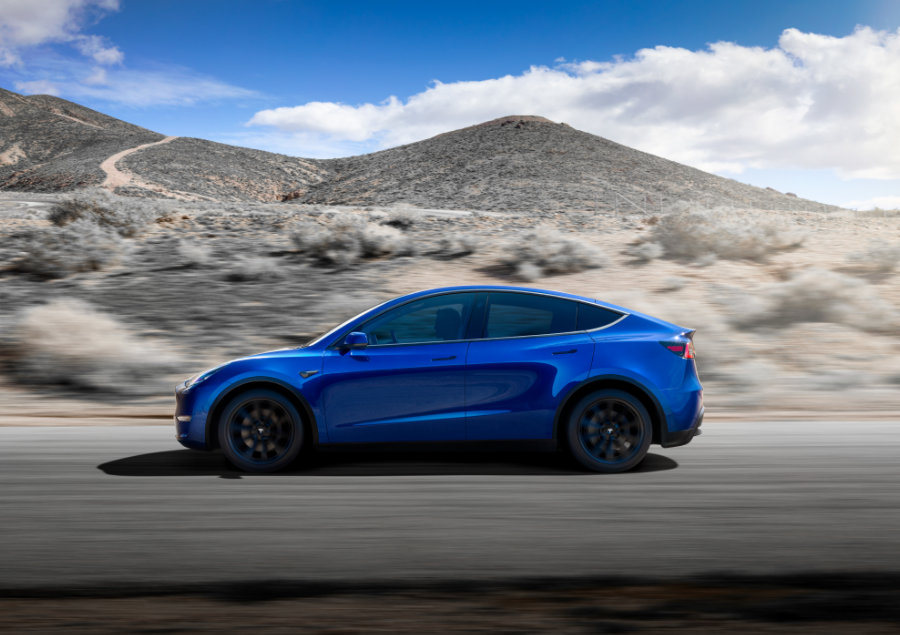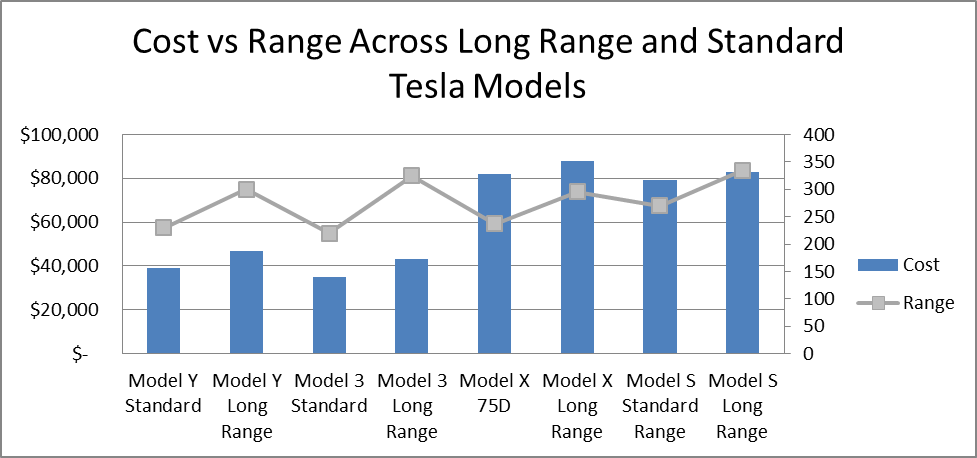
On Thursday, Elon Musk announced the new Tesla Model Y at
the Tesla Design Studio in LA. As the US continues to buy up more and more
SUVs, Tesla’s new compact crossover helps keep the company at the forefront of
the increasingly-competitive EV market.
Tesla Model Y available in 4 different models
The Tesla Model Y will be available in four different models: Standard Range, Long Range, AWD, and Performance.
Except for the Standard Range, all models will be available in the fall of 2020, with the Standard Range available a few months later in spring 2021.
The Standard Range Model Y, which boasts a 230 mile range and a 0-60 acceleration of 5.9 seconds, starts at $39,000. The Long Range Model Y comes in at $47,000 and has a range of 300 miles – 30% more than the standard model and the highest of any of the four models.
The AWD model costs $51,000, but for that extra $12k you get all-wheel drive (of course) and also shave off over a second when accelerating from zero to sixty. Lastly, at $60,000, the Performance model is the most expensive option, but jumps from 0-60 in a scant 3.5 seconds and boasts a top speed of 150 mph – an extra 30 mph over the standard model.
Here’s how the specs line up, straight from Thursday’s unveiling:
| Standard Range | Long Range | AWD | Performance | |
| Cost | $39,000 | $47,000 | $51,000 | $60,000 |
| Range | 230 miles | 300 miles | 280 miles | 280 miles |
| Top Speed | 120 mph | 130mph | 135 mph | 150 mph |
| 0-60 Time | 5.9 seconds | 5.5 seconds | 4.8 seconds | 3.5 seconds |
How Does the Model Y compare to the Tesla Model X and Model 3?
With the Model Y, Tesla is filling a gap. It’s creating a meeting point between the cost-effectiveness of the Model 3 (low cost/high range, see graph below) and the hugely popular SUV platform.
Here in the US, we love SUVs. North America is the biggest SUV market and sales continue to go up each year. By 2020 – the year the Model Y rolls out onto streets – experts expect SUVs to make up 50% of all US car sales.
For any automaker – including Tesla –to not jump on this trend would be true folly. Obviously, the EV maker already has the Model X, the full-size luxury SUV with falcon wing doors, but at a starting price of about $80k, it’s simply off the table for most drivers.

The Model Y though is an SUV from the company that Tesla wants to become: a maker of cost-effective, everyday EVs that dominate not just the EV market, but the auto market. With 66 cubic feet of storage (with the seats down), it’s smaller than the Model X, which boasts 88 cubic feet of storage (again, with the seats down).
At a starting price of $39,000, it’s half the cost of the Model X and just a smidge more than the Model 3’s newly-reduced price of $35,000. It’s an SUV for the mainstream market. And its competitors aren’t Tesla’s usual Lexus and BMW, but instead Chevy, Nissan, and Kia.
The Tesla Model Y Will Face Stiff Competition
Tesla obviously isn’t the only EV maker catering to the SUV market. When the Model Y enters the compact SUV market in 2020, it’ll face some stiff competition. Not just from the Chevy and Nissan with their popular electric hatchbacks, but also from Kia and Hyundai, both of which are putting out long-range, well-priced electric SUVs in the next 12 months.
This year, Hyundai is introducing its new Kona Electric, a small SUV with 258 miles of range as standard, all for a starting price of $36,450 – about $2,500 less than the Tesla. That’s more range and less money than standard Model Y.
Kia is also hitting the electric SUV track with its new Niro EV, another small SUV that some are billing as the most important EV to hit the market. It’ll sport 239 miles on one tank, right on par with the Model Y Standard Range, and while Kia hasn’t given official prices yet, we can likely expect it to fall somewhere around $36k to $37k, on par with similar vehicles.
Even with this increasing competition, Tesla still has the cool factor going for it, which will likely help them push their new SUV much further than either Kia or Hyundai. Tesla was responsible for 50% of all EV sales in 2018, driven by the huge popularity of the Model 3.
The strength of Tesla in the EV market is blatantly obvious when you see that, while EV sales jumped an incredible 81% in 2018 over the previous year, when you remove the Model 3 sales from the picture, that jump falls to just 11%. To say that Tesla is integral to the EV market is an understatement.
However, past success doesn’t necessarily equate to future sales. The EV landscape is changing on a daily basis and the market will look different when the Model Y finally hits streets in late 2020. Even still, it’s looking pretty good for Tesla.
Image Source: Courtesy Tesla Press Kit